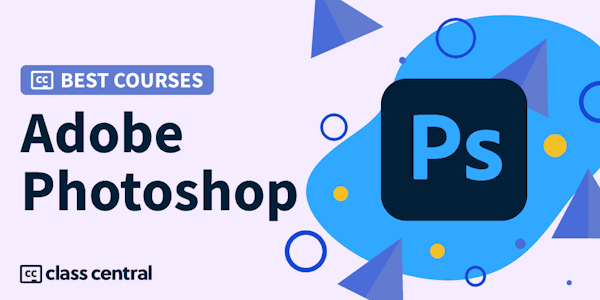Overview
Welcome to Graphic Design, the second course in the Effective Communications Specialization. Over 70 different companies have provided this specialization to their employees as a resource for internal professional development. Why? Because employers know that effective visual communication is the key to attracting an audience, building a relationship, and closing the sale.
This practical course gives you the tools to create professional looking PowerPoints, reports, resumes, and presentations. Using a set of best practices refined through years of experience, you’ll:
• make your work look fresh and inspired.
• apply simple design “tricks” to begin any project with confidence and professionalism.
• receive and respond to criticism and revise your project from good to great.
"This course is fantastic. It teaches a great amount of starter graphic design information but it is broken down into easily understood videos and quizzes. The quality was top notch and the interaction was as good as you would get in a brick and mortar school. I did not feel like I was missing anything by taking it online." - a recent Graphic Design student
All of the course assignments can be completed with basic presentation software such as Microsoft PowerPoint, Google Slides, or Apple Keynote. You’ll also have opportunities to explore and apply more sophisticated tools, such as Adobe Photoshop, Illustrator, and InDesign.
This course can be taken for academic credit as part of CU Boulder’s Master of Science in Data Science (MS-DS) degree offered on the Coursera platform. The MS-DS is an interdisciplinary degree that brings together faculty from CU Boulder’s departments of Applied Mathematics, Computer Science, Information Science, and others. With performance-based admissions and no application process, the MS-DS is ideal for individuals with a broad range of undergraduate education and/or professional experience in computer science, information science, mathematics, and statistics. Learn more about the MS-DS program at https://www.coursera.org/degrees/master-of-science-data-science-boulder.
Syllabus
- Getting Started
- This week introduces you to the importance of recognizing good design as the starting place for creating professional, attractive work of your own. We will look to the ubiquitous world of graphic design to establish a vocabulary of successful design and to find inspiration for our own projects. We will also discuss course prerequisites and review a basic digital design glossary that will help you navigate your chosen application.
- The Blank Canvas
- This week will look at the blank canvas – the untouched rectangle that will become our design project. We’ll discuss the importance of working with a grid, understanding negative space, and using appropriate margins. This week will also explore the palette of elements which, when chosen and used wisely, ensure that the finished design project is successful. We’ll cover type, color, images, and graphic elements such as borders, bars, and backgrounds.
- Tricks of the Trade
- It's time to start designing! In this week, we'll discuss the process of composition. We'll use the palette items covered in week 2, and deploy common visual design “tricks” such as contrast, repetition, sublimation, tension, and more. To help see both the effect and the universality of these design approaches, we'll look at design examples from art history, film, and current media. We’ll also cover the strategy of composition. We'll see that providing an obvious target, maintaining a natural visual flow, and prioritizing information are all critical to clear visual communication.
- Revision and Distance
- As we've said before, designers don't work in a vacuum. Our work will be judged by others, and, as good designers, we will learn to take that judgement constructively and in stride. In this week we’ll talk about what it means to be confident, yet open to criticism. We’ll explore the importance of revision as an ongoing component of design, as well as the need to enlist feedback and maintain distance in assessing our own work.
Taught by
David Underwood
Reviews
4.5 rating, based on 4 Class Central reviews
4.8 rating at Coursera based on 3262 ratings
Showing Class Central Sort
-
I was looking for a Graphic Design course and I was undecided between this one and "Fundamentals of Graphic Design" from CalArts.. so I took both! Hopefully this review will help others decide which one to take, or maybe even take both, too! This…
-
it was good information and advise for persons interested in graphic design, teaches you principles of the art and tips for the trade and how to make you work better and know when it is done
-
Un cours d'introduction au design graphique, riche et agréable à suivre. Le cours est bien construit, une liste de "bonnes pratiques" est fournie. Le tout étant motivé par l'expérience de l'enseignant.
-









